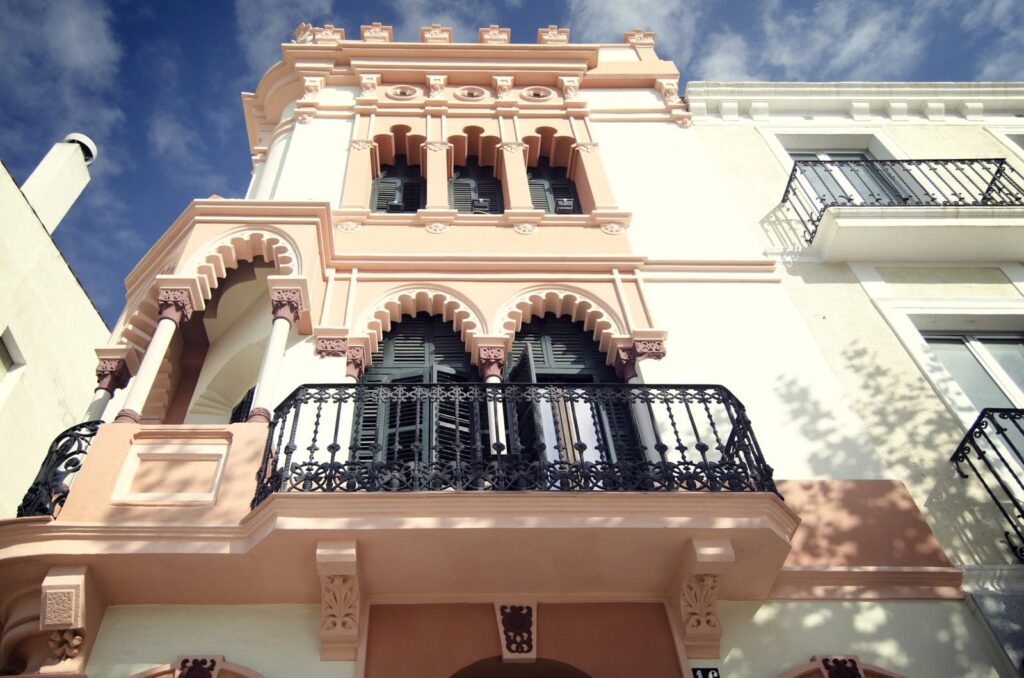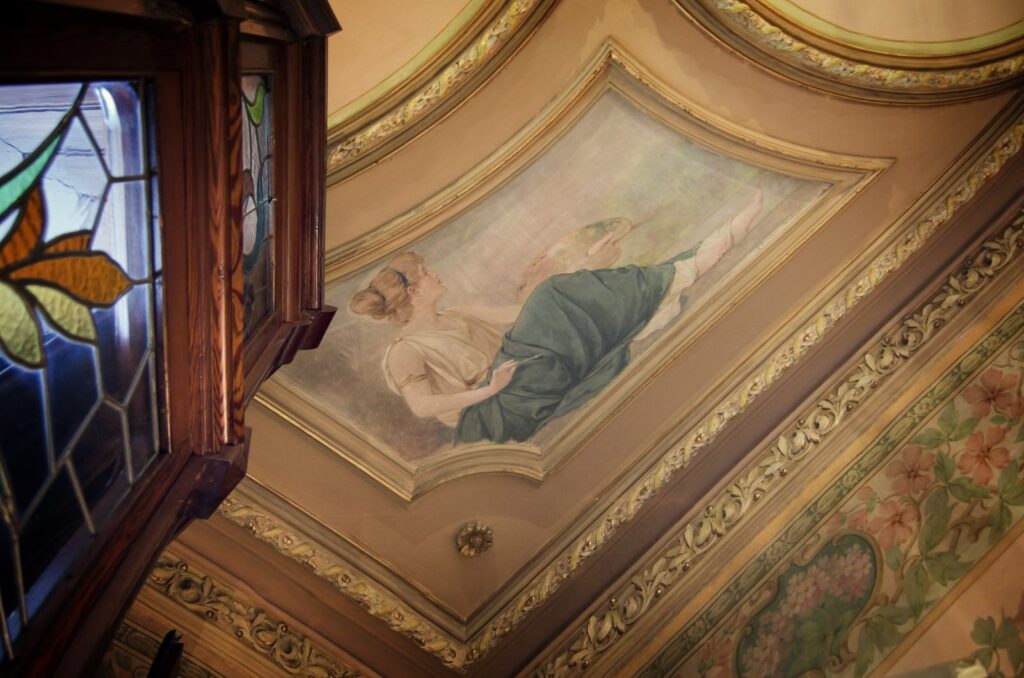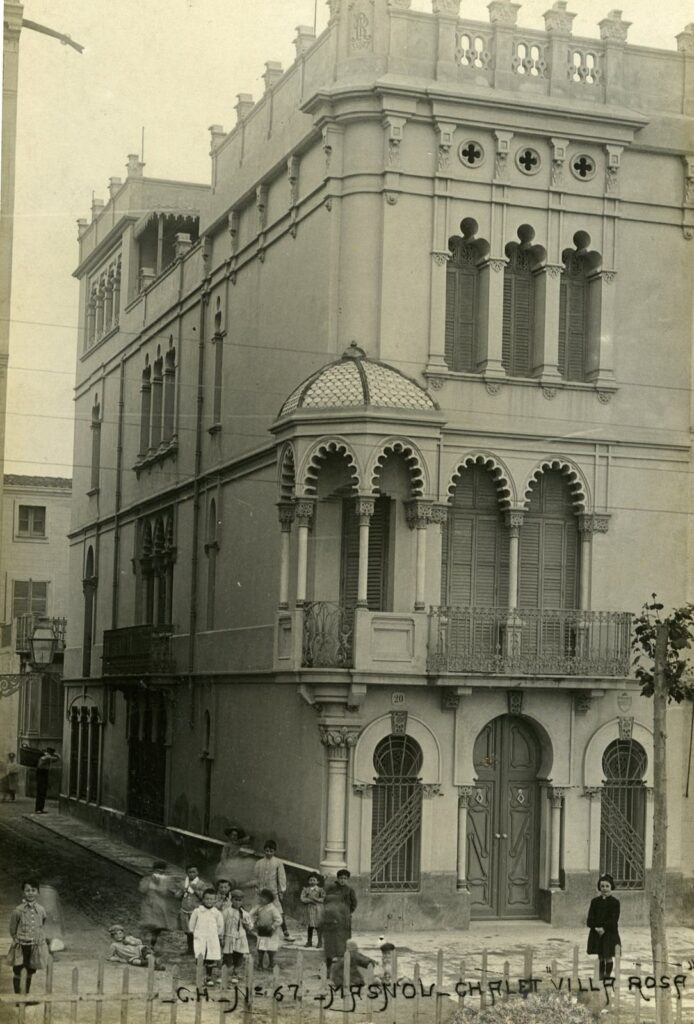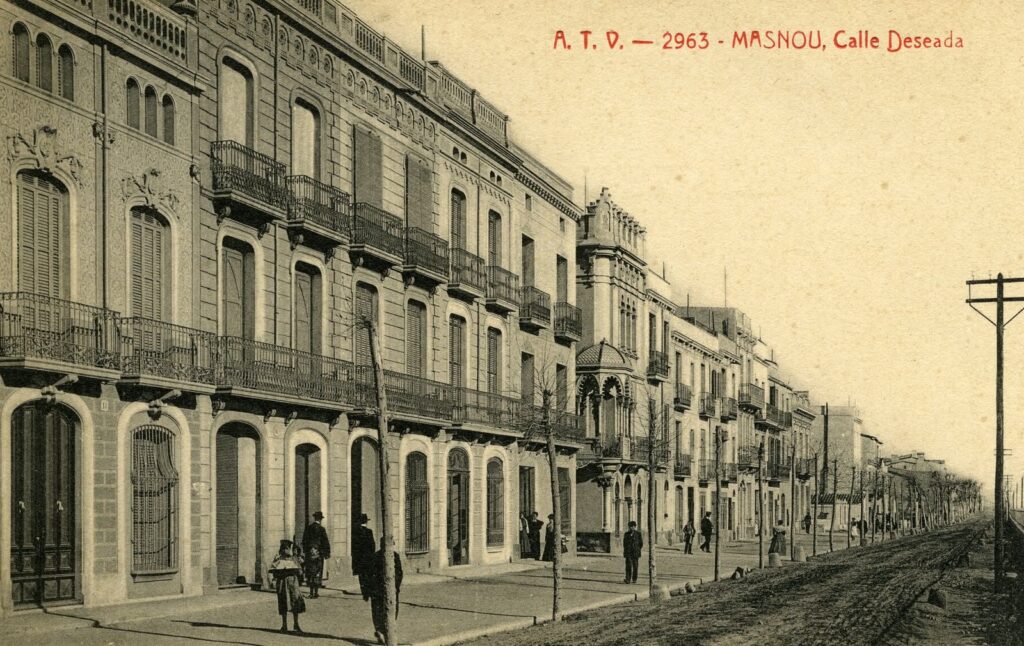The construction of this ‘casa d’indians’ (the indians are Catalan emigrants who set sail for Latin America and returned after making their fortunes) represented a stylistic innovation, as it showcases its owner’s love of Islamic architecture, Jaume Sensat i Sanjuan, who lived in Egypt for two years.
The rebuilding project was designed by the well-known master builder Pere Andreu. The outside of the building concentrates its ornamental richness, where the corner viewpoint-platform is especially remarkable, with cusped arches and a roof of ceramic shards.
Jaume Sensat i Sanjuan was from a seafaring family of and commanded his own ship for a decade, until he moved to Buenos Aires, where he made his fortune as a stockbroker.Married to Rosa Pagès i Orta, he returned to Masnou to remodel the summer home, also known as the Villa Rosa. The couple lived most of the year in a flat in a manor owned by Manuel Malagrida i Fontanet (an indià who earned his fortune producing tobacco in Argentina) on Passeig de Gràcia in Barcelona.
It is now a municipal facility that works as a House of Culture, with exhibition halls and the Tourist Information Office.
Popularly it has also been known as the house of the marquis of the manger because of the verses that some Masnovino students dedicated to the owner because he soaked the road every morning:
Vos que sou home sensat
i en teniu tanta fal·lera
en regar la carretera
des d’avui quedeu nomenat
el marquès de la manguera.
Pictures

Casa de Cultura,

Casa de Cultura,

Casa de Cultura,

Chalet Villa Rosa de D. J. Sensat

Chalet Villa Rosa,

Chalet villa Rosa de D. J. Sensat,

Calle Deseada,
Adreça
Casa de Cultura
Passeig de Prat de la Riba, 16